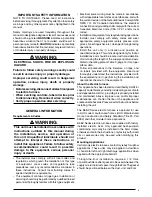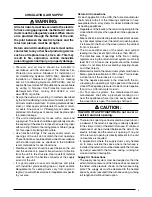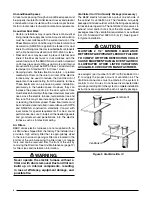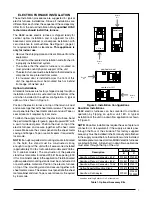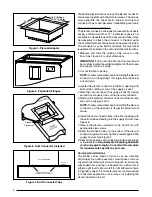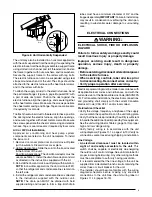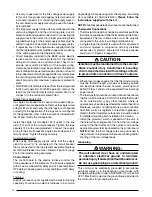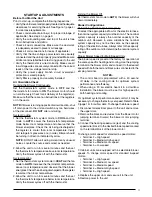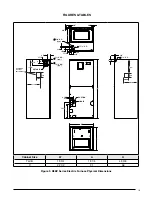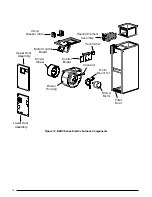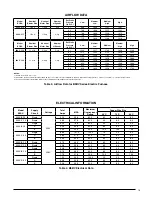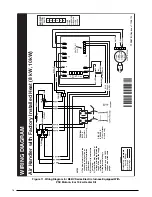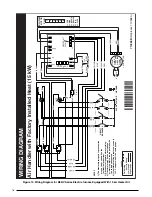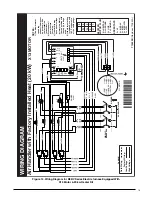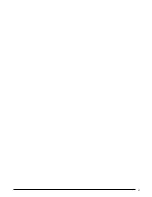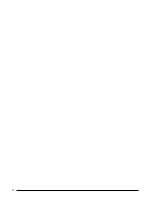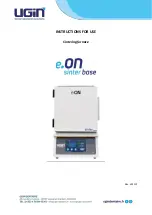
11
STARTUP & ADjUSTMENTS
Before You Start the Unit
Prior to start-up, complete the following inspections:
√
Verify the unit is level and properly located with adequate
clearances for servicing the unit. See Figure 1 (page 4)
for clearance requirements.
√
Check condensate drain line(s) for proper drainage (if
applicable). See step 4 on page 9.
√
Verify the surrounding area and top of the unit is free
from obstructions and debris.
√
Check all duct connections. Make sure the duct work
is adequately sealed to prevent air leakage.
√
Check all coil connections for leaks (if applicable).
√
Verify that the line voltage power leads are securely
connected and the unit is properly grounded. Make sure
all doors are installed before restoring power to the unit
√
Verify the thermostat is wired correctly. Make sure all
low voltage wires are securely connected to the correct
leads of the low voltage terminal strip.
√
Verify the power supply branch circuit overcurrent
protection is sized properly.
√
Verify filter is properly and securely installed.
Air Circulation Check
Running the Blower Continuously
Set the thermostat’s system mode to
OFF
and the
thermostat’s fan mode to
ON
. The blower motor should
run continuously. Check for air delivery at the register(s).
Make sure that there are no obstructions at the registers
or in the ducts.
NOTE:
If blower is turning opposite of arrow direction, shut
off main power to the unit and switch any two field wires
at the disconnect.
DO NOT
alter unit wiring.
System Cooling
1. Set the thermostat’s system mode to
COOL
and fan
mode to
AUTO
. Lower the thermostat’s temperature
mode below room temperature and observe that the
blower energizes. Check the air being discharged at
the register is cooler than room temperature. Verify
unit refrigerant pressures are in order. Blower should
be turning in direction indicated by arrow.
NOTE:
DO NOT alter unit wiring. Listen for any unusual
noises. Locate the source and correct as needed.
2. Allow the unit to run for several minutes and then set
the thermostat’s temperature above room temperature.
Verify the blower cycles off with the thermostat.
System Heating
1. Set the thermostat’s system mode to
hEAT
and the fan
mode to
AUTO
. Increase the thermostat’s temperature
above room temperature and observe that the blower
energizes. Check the air being discharged at the register
is warmer than room temperature.
2. Allow the unit to run for several minutes and then set
the thermostat’s temperature below room temperature.
Verify the blower cycles off with the thermostat.
Turning the Blower Off
Set thermostat’s fan mode to
AUTO
, the blower will shut
down immediately.
Blower Configurations
Determining Nominal System Capacity
To select the appropriate airflow for the electric furnace,
the nominal system capacity must be known. The nominal
system capacity is always the nominal capacity of the
outdoor unit. However, in some situations the nominal
system capacity may not be the same as the capacity
rating of the electric furnace. Always refer to the capacity
rating of the outdoor unit to determine the nominal system
capacity.
Proper Blower Speed for Multi-Speed Units
The blower speed is preset at the factory for operation at
the same speed for heating and cooling. Use the jumping
terminal on the blower motor and connect it to the desired
speed with both the red and black wires connected to the
jumping terminal.
NOTES:
•
The control board is programmed with a 40 second
off delay in the cooling mode for optimum system
performance and efficiency.
•
When using a 20 kw electric heat kit in a downflow
installation, the blower must be set for high speed for
both heating and cooling.
For optimum system performance and comfort, it may be
necessary to change the factory set speed. Refer to Table
3 (page 15) for airflow data. To change the blower speed:
1. Disconnect all electrical power to the unit and remove
the upper door.
2. Remove the black and red wires from the blower motor
jumping terminal. Discard the blower motor jumping
terminal.
3. Connect the heating speed wire (red) and the cooling
speed wire (black) to the desired blower speed marked
on the terminal block of the blower motor.
To change motor speed for standard 4-speed motors:
• Terminal 2 = High speed
• Terminal 3 = Medium High speed
• Terminal 4 = Medium Low speed
• Terminal 5 = Low speed
C Cabinet units are equipped with 5 selectable blower
speeds. To change motor speed for standard 5-speed
motors:
• Terminal 1 = High speed
• Terminal 2 = Medium Low speed
• Terminal 3 = Medium speed
• Terminal 4 = Medium High speed
• Terminal 5 = High speed
4. Replace the upper door and secure it to the unit.
5. Restore power to the unit.



